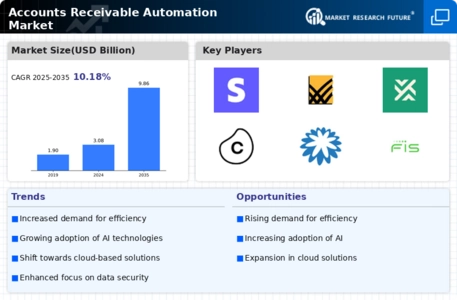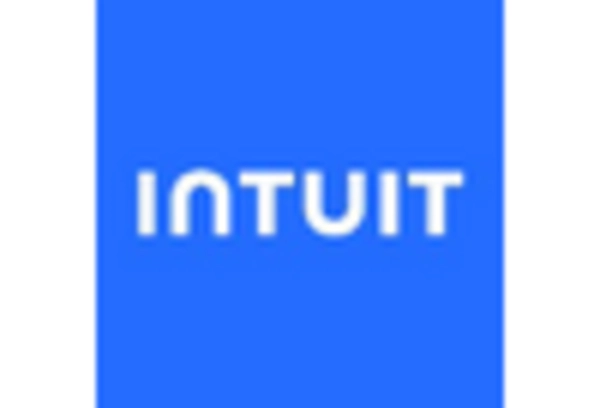The Accounts Receivable Automation Market is currently characterized by a dynamic competitive landscape, driven by the increasing need for efficiency and accuracy in financial processes. Major players such as SAP (DE), Oracle (US), and Microsoft (US) are at the forefront, leveraging their technological prowess to enhance automation capabilities. SAP (DE) focuses on integrating advanced analytics and machine learning into its solutions, thereby enabling businesses to optimize cash flow management. Oracle (US) emphasizes cloud-based solutions, which facilitate real-time data access and improve decision-making processes. Meanwhile, Microsoft (US) is enhancing its offerings through strategic partnerships, aiming to create a more interconnected ecosystem for financial management. Collectively, these strategies not only bolster their market positions but also intensify competition, as companies strive to differentiate themselves through innovation and customer-centric solutions.
In terms of business tactics, companies are increasingly localizing their operations to better serve regional markets, which appears to be a response to the growing demand for tailored solutions. The market structure is moderately fragmented, with a mix of established players and emerging startups. This fragmentation allows for diverse offerings, yet the influence of key players remains substantial, as they set benchmarks for technology and service standards.
In August 2025, SAP (DE) announced a strategic partnership with a leading AI firm to enhance its accounts receivable automation capabilities. This collaboration aims to integrate AI-driven insights into SAP's existing platforms, potentially revolutionizing how businesses manage their receivables. The strategic importance of this move lies in its potential to provide clients with predictive analytics, thereby improving cash flow forecasting and reducing overdue accounts.
In September 2025, Oracle (US) launched a new feature within its cloud-based financial suite that automates invoice processing using advanced machine learning algorithms. This innovation is significant as it not only streamlines operations but also reduces human error, which is often a critical issue in accounts receivable processes. By enhancing automation, Oracle (US) positions itself as a leader in efficiency, appealing to businesses seeking to minimize operational costs.
In October 2025, Microsoft (US) expanded its Dynamics 365 suite to include enhanced accounts receivable functionalities, integrating blockchain technology for secure transactions. This strategic move is noteworthy as it addresses growing concerns around data security and transparency in financial transactions. By adopting blockchain, Microsoft (US) not only enhances its product offering but also aligns with the increasing demand for secure and reliable financial solutions.
As of October 2025, the competitive trends in the Accounts Receivable Automation Market are heavily influenced by digitalization, sustainability, and the integration of artificial intelligence. Strategic alliances are becoming increasingly vital, as they enable companies to pool resources and expertise, thereby accelerating innovation. Looking ahead, it is likely that competitive differentiation will evolve from traditional price-based strategies to a focus on technological innovation, enhanced customer experiences, and supply chain reliability. This shift underscores the importance of agility and adaptability in a rapidly changing market.


















Leave a Comment